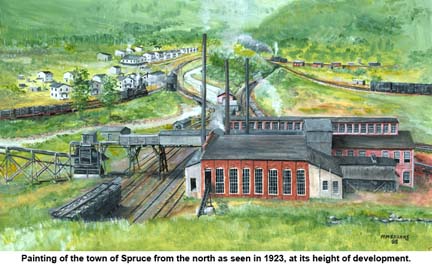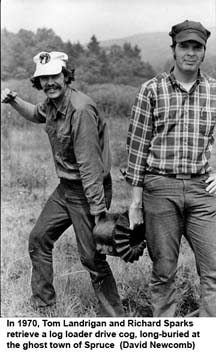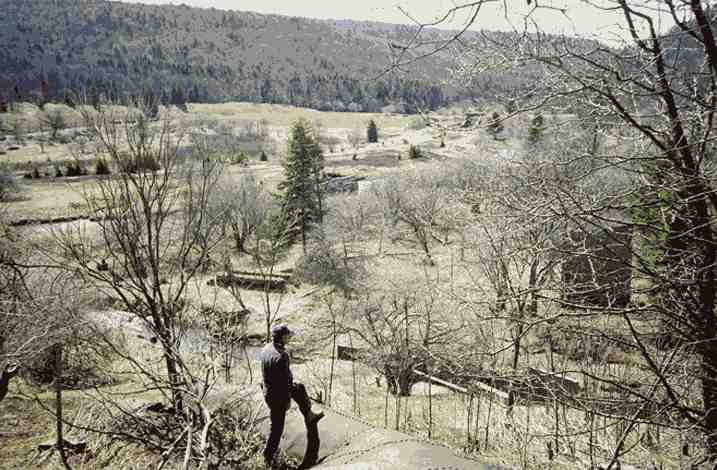
The Ghost Town of Spruce

 |
 In
1928-1929, the Western Maryland Railway
took over the greater portion of the GC&E railroad (and the
name) to take advantage of the developing coal industry of the area. WM
railroaders moved into the town, which became a terminal for helper
locomotives employed in pushing trains over the steep grades over the
summit at Big Cut between Slaty Fork (Laurel Bank) and Spruce. Another
bridge crossing Shavers fork was added at Spruce in 1929, forming a wye
for turning locomotives. A new main line was built east of town, making
a big horseshoe that crossed Shavers Fork at the south end of town and
rejoined the original logging grade on the long climb toward the Big
Cut. The new line went right across Main Street, eliminating one house.
The earth fill for the Shavers Fork bridge was dumped right over the
former logging main line, burying a stretch of track. The hotel was
demolished. A sand tower and a tall 75-ton coaling station were added
in 1931 near the water tower. In 1941 WM built a new engine house in
the center of town.
In
1928-1929, the Western Maryland Railway
took over the greater portion of the GC&E railroad (and the
name) to take advantage of the developing coal industry of the area. WM
railroaders moved into the town, which became a terminal for helper
locomotives employed in pushing trains over the steep grades over the
summit at Big Cut between Slaty Fork (Laurel Bank) and Spruce. Another
bridge crossing Shavers fork was added at Spruce in 1929, forming a wye
for turning locomotives. A new main line was built east of town, making
a big horseshoe that crossed Shavers Fork at the south end of town and
rejoined the original logging grade on the long climb toward the Big
Cut. The new line went right across Main Street, eliminating one house.
The earth fill for the Shavers Fork bridge was dumped right over the
former logging main line, burying a stretch of track. The hotel was
demolished. A sand tower and a tall 75-ton coaling station were added
in 1931 near the water tower. In 1941 WM built a new engine house in
the center of town. A
view of the site of Spruce from the north
in 1994, the remains of one of the mill smokestacks is in the
foreground. The only standing ruins are from the concrete
walls of the power house. (Photo by Richard Sparks)
|